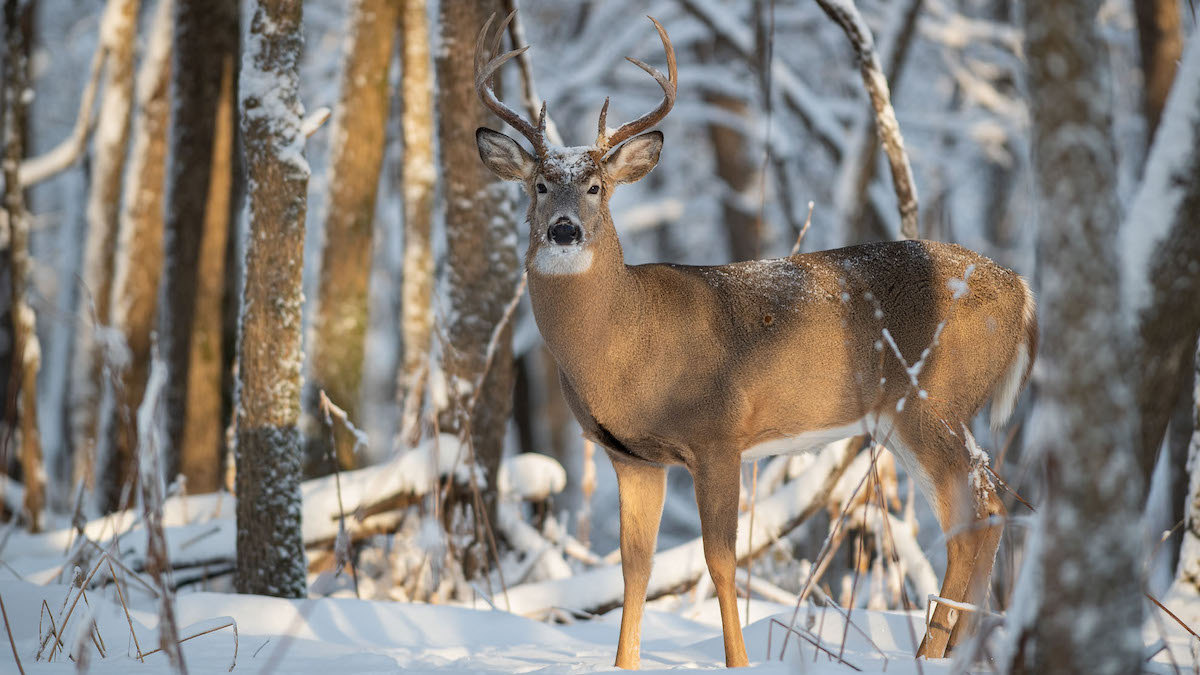
I used to think the late season was a very difficult time to kill a nice mountain buck. In Pennsylvania, rifle season kicks off during the first few weeks of December, and although some great bucks get killed every season, few hunters are consistent from year to year. In most states, hunting pressure is extremely high during gun season, making it difficult to find big bucks unless they’re bumped to you by another hunter.
However, over the last few years, I’ve come to realize that a completely different strategy is required to be successful. Understanding a buck's security needs is the ticket.
As most rifle seasons come to an end in late December or early January, a different set of challenges arise, but with more predictability. Similar to early season, there’s a big focus on food sources.
I used to write off the late season, but I’ve found success in two of the last three years hunting in December and January. Productive late season hunting involves using different tactics and adapting to the situation at hand, especially when temperatures are consistently south of freezing and snow is in the forecast.
Food is King Late season hunting has a lot of similarities to early season, perhaps the most obvious being that food is paramount. But with really cold temperatures, the need for nutrients increases even more. Deer are burning calories trying to stay warm and need to eat to replenish their fats and carbohydrates. The top food sources in late December and January are acorns, grasses, and browse commonly found in new logging cuts.
A new logging cut might be my favorite late season food source to hunt. I’ve talked to many loggers in my hunting areas and they start seeing deer movement this time of year before they even shut their skidders off for the day. The fresh tops of recently cut trees are amazing food sources, and hunting along the edges of these cuts can be extremely productive.
Logging cuts that are one to three years old can also be valuable to hunt. Blackberry briars and new growth sprout across the forest floor, all of which mixes in with grasses on old log landings and skidder roads. Hunting the edges and interior skidder roads has also proven productive, especially where deer movement is evident in the snow or dirt.
Thermal Cover The late season can bring extremely cold winds and snowfall. Like humans, deer don’t want to expose themselves to the elements any more than they have to. Thermal cover often includes conifer trees like pine, cedar, spruce, and hemlock, all of which act as weather breaks to block the wind and most of the snow. Deer seek out these areas to bed, especially on south-facing slopes that get more sunlight.
In the evening, edges of thermal cover over a primary scrape area and near a feeding patch are great ambush sites. Scrapes are traditionally viewed as something to focus on during October and November, but primary scrapes can be a focal point at any time of the year. Male deer will typically rub their forehead glands on the licking branch after leaving their buck bedding location.
Spring Seeps in Draws and Sidehills As large areas of ground begin to freeze and the snow starts piling up, it becomes harder for the deer to browse on grasses and other food sources lying close to the ground. Furthermore, water becomes scarce since most standing water will soon freeze over if it hasn’t already. Springs and seeps, where water bubbles up out of the ground, are typically last to freeze and first to thaw. Source springs often never freeze. The grasses and plants in and around the seeps stay greener longer and provide food and water in one location.
If you find an oak tree that had a good acorn crop near a spring seep, it’ll be a deer magnet when everything else is frozen over. Setups around these areas should coincide with the most attractive terrain and vegetation cover in the area that bucks will move to during daylight hours.
The exact positioning of your setups can change depending on the weather. You can get away with hunting right on the food sources when it’s really cold and the deer are getting up earlier, but when it’s warmer, that strategy might not work. On warmer days, stay tight to bedding or wait it out until you get that cold weather front you’re looking for.
Feature image via Matt Hansen.






